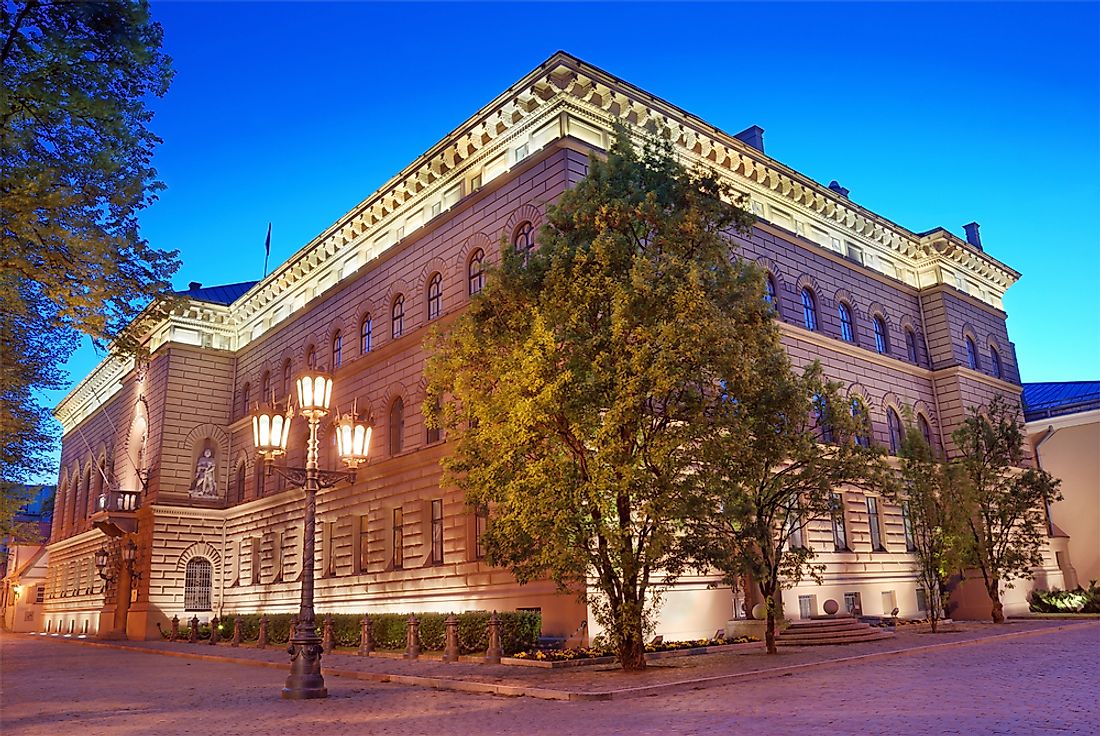What Type Of Government Does Latvia Have?

The Constitution Of Latvia
Latvia’s government is a parliamentary republic which has a unicameral parliament (Saeima) as well as the Cabinet of Ministers. The country’s Constitution or Satversme came into force in 1922 after being approved by the Constitutional Assembly of Latvia. Satversme recognizes the main branches of government as the State President, Saeima, Cabinet of Ministers, Courts, and State Auditor. The 1934 coup d’etat in Latvia led to the suspension of Satversme, and it was not until 1993 that the fifth Saeima was fully restored.
The President Of Latvia
The Latvian President serves as the head of state and represents Latvia internationally and appoints diplomatic representatives of the nation as well. The Latvian President has the power to implement decisions of the Saeima as they pertain to the ratification of international agreements. The president declares war upon the guidance by the decision of the Saeima and appoints a Supreme Commander during wartime. The Latvian President retains the right to call and head extraordinary cabinet meetings and to determine the purpose of such meetings. The president also can propose to the Saeima to be dissolved after which a national referendum will be held. The President can initiate legislation and also proclaims laws approved by the Saeima.
The Executive Branch Of The Government Of Latvia
The Latvian Prime Minister is appointed by the President, but has to garner the support of the majority legislators in the Saeima. By convention, the position is held by the head of the majority leader. The Latvian Prime Minister appoints members of the cabinet who are subsequently presented to the parliament for approval. Ministers develop state policies within the scope of their assigned institution. Latvia currently has 13 ministries. The Prime Minister supervises the ministers to ensure they fulfill their duties and also coordinates executive actions. Latvian cabinet meetings were opened to the public beginning the early 2000s.
The Legislative Branch Of The Government Of Latvia
A total of 100 members sits in the Saeima (Parliament of Latvia) after being elected by proportional representation. Seats are given to those political parties that attain at least 5% of the popular vote. The members serve for four years and then elections are held again. Deputies in the Saeima represent one of five constituencies. A Speaker assisted by two Deputy Speakers chairs the Saeima. If the President cannot perform his duties, the Speaker steps in and executes them on acting capacity. Members of the Saeima represent the Latvian population and makes laws. The Saeima ratifies international agreements and also responsible for appointing major public officers.
The Judicial Branch Of The Government Of Latvia
Latvia’s judiciary features a three-tiered court system. The Supreme Court is legally recognized as the court of appeal on points of law. The Constitutional Court is an independent judicial institution which determines matters of the constitutionality of laws as well as other legal actions. The Latvian courts of the first instance are the district and city courts which give audience to criminal, administrative, and civil disputes. A land registry office may be attached to the city or district courts, and it manages land registers, approves statements of the auction, and executes debt recovery orders. Regional courts occupy the second tier of the court system where a panel of three judges who hear administrative, civil, and criminal cases. Military courts can be convened in times of war or emergency. Court judges are appointed by the Saeima, and the court system is overseen by the Ministry of Justice.







